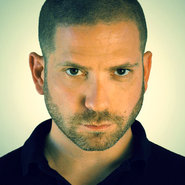By Jason B. Cohen
By definition, an operating system (OS) is the software that dictates the performance of computer hardware. I am really looking forward to the next “iDevices” – phones, watches, glasses, jewelry, whatever – because I think designers will significantly improve the way that software and hardware work together.
With that on my mind, I came to a realization: Branding is your company’s operating system, especially in the world of luxury brands. Why? Luxury has always been about communicating and selling a brand experience, just as much as goods and services. That critical, cumulative brand experience is any luxury company’s OS.
The obvious contrast here is the world of mass brands, where commercialization and commoditization clearly rule over a carefully considered user experience. That is just not what mass brands are all about.
On the other hand, luxury consumers are willing to pay a premium for exactly that experience. In exchange, of course, they expect premium services and goods along with it.
Think of luxury consumers as patrons of creative, quality experiences. Any well-crafted luxury brand, like any well-crafted OS, is entirely built around its user.
Core to the luxury OS are brand and product attributes such as heritage, craftsmanship, artisanship, connoisseurship, taste and material. Three more I would argue are equally as critical:
1. Planning
A luxury brand OS has been predetermined. Strategized, if you will. It must offer an advancement that progresses past previous iterations or competitors in some way that benefits its target: it has got to be different and better, all while being meaningful to people.
A big part of the pre-configuring that luxury brands must do involves creating hierarchy and organization – the purposeful arrangement of things – along with behavior rules, which is a guide on how to act in the world.
To do all of this properly, luxury brands must clearly define and understand the target, or user, and develop programing accordingly.
2. Interface
Next is how the brand interacts with the world: Interface.
I am talking about the experiential elements at a tactical level such as look, feel and voice.
Within the OS of a luxury brand, these become immersive tools for communication.
Superior luxury brands are able to address, diagnose and repair glitches and problems with their interface in real time. They do it in a way that makes them appear almost human and self-aware, bringing to mind contemporary and probably future software.
3. Execution
Last, and most important of all: execution. Consistency is the point of entry for luxury brands here.
Brands and operating systems that are unpredictable and erratic are difficult to relate to, and have a hard time making meaningful connections with their targets, which is an essential component of a luxury brand experience.
We are all aware of the typical core elements of execution such as product, retail environment, campaigns and messaging, but I would argue in our always-connected world there is an increasingly important contender: quality content delivered within the proper context.
REACHING OUT beyond the confines of the brand itself to deliver meaningful material at the right time and place is what sets truly successful luxury brands apart nowadays.
Rock-solid, effective branding is more than a logo, an ad, a brand book or usage manual. It is luxury's operating system.
Jason B. Cohen is executive vice president of creative at The O Group, New York. Reach him at [email protected].
{"ct":"PJu0PNVdv78QTmzG7ZnddttMoZeM0bYiUxtzeYdw4fg3\/JLF8nWhMNAXU2qwO5mBHBFbQnJaKIVtMBZsfj4Zfl44q2KpGel8vFU7BWlr4HKcGD\/Pi6g8s5\/TsKXoCqNu\/ABiQeBNmhJg8KMSfegmnOhnHa4BNA\/oBDHnNYcyMc+aBiySW7MI8GWrtOUpnOtm4FGtgQ\/FuljMQRogx3ER3m27mjxKP7iRdLgu63DvP2OBcEf9rtAl8WDyhobZUmgYCrDXibQcrNkWiZn\/WnDEbQnOKdP277auTx4UbYl1PffC00B\/00EG51nAgI\/pehYxt0ifGXOJS3IXaS1Zdl9uJalqHCoUIovDLxIZdsSwoEtxhAC5O3aMhXdBIqXePJernCQNIvS9k5WQ58g+aJCkxWrktwszeZXRv+mliHLGZXh+23MjM1jv0zvajzsxzM8pVIvQZn3RhNY82W+wm\/DPfT+lv5dQ3gzUOUoM0328K35QOh2wij+w4g8HV6C2p7KkldC0pS8G+dzLjKvyaUcX\/WfmitjxLyhJ27lffgDVS3WP2Wa\/9KDtL9SBcBwvNoA1ImqJRtMBcCR9zr1l0t\/6o5UagCfO7iHiqmS1TD\/lt\/\/eQh6FY5iUgBtDeAEf0OvVY6QiXZvEXM\/egAaqcGjWTqO4RftcvGNd5A7ez5c5ZVROs4b++KQh0FnAf6nyiEuViBKL2Wht322+tdXLQHjHP8dZqV4sC9\/jxRkyt\/SK\/AGES940FCqFixwU3e7vN8\/WQkj+lz2GqoO+hVun6WWyrBo6LXkKVAsntKjr5XxCCaUeW19z3cPmP0\/yvs\/Q2uinIf+cawIWpjaRKr7pfxqfWzy\/sgRITlPaFHWFoCuqk98eDET1AhIlRMSgdE35zjAcjS0UcHdaAk\/J5iwaCQAWMH7fgmgkO0+UUgfgxq\/3GUZwEUb6HEJoaJUIDXTWLuTz2oLlqRjiJ3UWJ8\/DZYQaQhX6JFn1OKu15Nzc1qWmBMbO3BBIYpIDmRf\/41teYpR+OtIEXVgSk84Qe3v9oTLP\/FcvvCENH+7heVw4EXCD4yQLyLHe2MryuVqXT5t0gEzErtXkXQxnmfPyvfjjXspmYXVT9Ua9MA6Hp9e9Ik7CjZ8k+fzP90wCi8jtY0NKrb3jx6cz8haoPSDq6fapREaWVVDUUULkbJsbmnqwVinL8he48tEH9S0MISwVFTR2o\/tRm7rEmmxZZZ9KqsoT+8\/88cbM9pKHuD2orezuyv+767WbQFYTPjUFpw5TUe\/9UQL9Iv8dforYVA2ORCAoccXpQBMWcvMslHA8snYnN\/HeKoYdPpdNQ9hBpYjf5HI5g7Uq7s0CibNQp08uImJCrLY9mslXLCVzh90p66T\/5EsYILgAPFy7MC+louvuuw6yNNlZPi\/aBHkjYt\/gEJtG5e5bInWR+Pqoq3tFf8EPq62TAD017MoByjxvbAtlSZnjmpaRSqDxkPr6fh4WhAGHor2JJ9so7F4oRfqZvpN1TlNVveftH9+7ojkucGMdyDiUOOFuunihG8ZgZhzPEersyjGGNQcBAxd6Pg3+eTPc3pdDkO7x\/qMBHw7F\/cJWF\/kosxCYrT5Hn9GjXeEjXwEWs0D12KphBuEdKi3CNzf1mWCw6GPIWMtOKmzPWXiXa5vsxO69\/LHTeMDTZJdEfvN0RKP+UtOisJQe2TDdOVR3nhSa6QF+glvxpukvoOXV7TAom55MwjZDijJw76MSoS3FZrIq\/AYXY6Zjhp5oiHbu2uOfOprtrYJvpMEHR3q66WhOiaSA\/pNhH2idx1MfTRKqTor5TVLcU\/QHQd8kfPtrG2cQOobEbGxZanAaM7Qq9SUDWKPY\/B96W25nqbgWepHK46Clcn\/L8CQk3W511s\/jG6d6CRdbZN+aw1Zzsk2MKVv5jGyb9f9jup7J\/oaDF8AA1suALlrRICWrI3yHuFPkw4bYRwgra6vTFYVRtoP3NTbmoRUudJVYlK8x9eU7wZ\/ctESbUMfXQ66iWNTkosm58zvJBV3b+KM5yLwL8mlFw89KuTYr3OwvHaOeIwLxDKseIvstwVK\/NrD\/7iGRoafPSxs3so7wEbuYJku5WuaNZuz66L2XfpaOlGnPLM0FoEV8UUJTcTsxg17clvrSUqrUdM80NgINeJui11Jk73+zucyMcEBIjcYyp3i21gMlNhtMW2zd5yp43qfO+KRLhZbNQpV\/i0ebtASVzZm8pnMJUvpTSn3feqlhpksk9Qh2JWqDvNBqWzxUpXyVA+XqR7ElNGkHmgzaFWrAFv+fjPq6kSmz96QwoNPaEVZx16sfjHbOuF37+HZjbe3GXdZGRlJO6uhPoih1TWHLqrtly04X\/BExH8ShR\/fOxCZbzlnPAJqygU6KxECa+DOgOenpTSvuhXIsYddVtq3bL6eXjCx7Sd2VeclnzOrRuDjfkxD758NMSXDRhce7irS4cVHz4yPIUa2ktPyfZ34IQY4x2uYP2XRbzKY5k1Rte2g4RKfuh\/JHESH3najqook5G7MD6dSlunUrq5\/1BD3vgRWr3v5VJgvIaTT50e2hfg2p7EWKEanAR5cAuBkEqLVI1uHFsO1M7pEjE+z+jiAZeAKzRD\/zJQVUnXZepY6FETZgCBzwBXAaXINL1e4TPdNVDNsJajhdW3H6Ig6v2oYp5bchtPHGgUxWxKXN0NeoZU3lVrb\/jti6ge\/36pfjSVSmKFSzSriFmDd2cU6DXj1BWhxdpaK+t0puIFFAMH0J7H4SHtAWC5aoEiN8WpLplLHx\/y0QdJm7s0cG6a149vo9jgvkCkStv8Ek2QuJORGH68MCx3IoieacwETMA9R5gMDuaQaj60Nx1NFlnBd7k6BwX0hTgQanIOO3gX91VvofUIUVIuek+Jt35+tIFyX9zKWu6dE+2IfpBZtTfM7R6Ra6RiF+JZsaMbE3nQGN8RR3Xm7u1b2V4iolhtt2QylEVs04ZU4WX5XPTRYxPN6Ox40KUwZAW2tcc8JC3b9vLzTodvXPzYh6q06\/PzozyBbQIzhNjwpPTI9vo3x6FCm4We1K+UnTzP3GmpNhaCQ0BWrlzRFHT8hf2sdD8WktIdVUiJpnKsJpbeCM9Ztk8qGjQBazqPOBByiBMY3kfWDrDk2vFYiWrc\/qKCzeyEDxQQRB2OurAQdI9niCw2aYOEP+FfrQe87ghLjS2SUMKU7J2zh0zp6HXAOW0BioIe7deUi\/wkqog62\/9HIyXo1EuzbVkdnUxzbVAdzr2LHdKpnvLr89xWh0GCmNsySXe\/1YOu8AppuAowP7XA3OzZrlalXgSIzGfbpjvxLx3WgVo57jpYgImbY6+WNWVKw8LA91T0u3XitBYrhxHokoAmiipxSNr4IRujBsRRX\/anZ9Xg5AR3SuAzV9GFyaLvtlWQsSLC4i3rwMsSLPBTMlPbUGrVjM99JCRzA5ZgTMpPva3G95cYzol\/tSqhN9zE9PFPpIasu5I5x6hOVsIHVcAchSS43R8IQ8Cl2SEKwX5dELJyBQa7vsvP3Vk9qe+K\/1MaDwN4iz2Hk2LuEerJzo0bxLALwL+aCaOeataaeGpTHhLe41H3Eli8UHWPW3o2Wbj9PKvJS\/cnOjWV4fjjmEFUJACuZEG8mfyMiHnlTzcDdFEW3oXggM3Ggf6GbGoXf2fFPfIO9jr7klqDGiSlwFgukMBcdWdIVN4z8ooo9p\/endyuZa8wLfHQprgrRzjABk9LExF\/PcCugpB\/YDQUH40tIMbNPhc3ovhk\/YkiBF653Yjpfopdns7N4OW9gTZTu\/Cw85UYttQG3EuVSGhMJdP8gjwx6TVjfaWsT\/lanOOjKysWRDyM9jm664hawG6frgr\/fS6+Z7ZwwiyqtP5ly1Jdmnd1GZxPDb9CTb7ihzcA3vjAa5Jooh3m9NIaRc2gAN0vJIFZNBqzXhaMMVXX\/4VzXoHSJadwi1ylm6XUsymxgW+Rop1hHEg5\/bjWEDOdNEE6fo3+XgqJrhBP5Hnq0mQ4DrQQbKXuU\/xJbGgyYQ26Y5SJzO4K0Rp9fULIJ6FF38+Bfq97JnL3Y4T34X7riWiIvAzOKVeG32DrCPVPkKyEZtWDNXboJEwsSuaaw5oCjx4pXleM2UMKQpOsw90RFZiM8Uzt3rHx2hGcx8N8WDGGlIFlfXp4u\/M8\/rEitLXURKHxeYsuAJPi3V0QATFcEjzsLuvteZ+hizoaXMfPmDM2EbJwH82nX0YXGZmwc07S8q4jdmX9gmJlTodbiPcUE1SPKfmprxzCi1LXAwp24TBa0tW9zFUhR\/Wke6iiCDh3JvVkKqDnBWT0R72voFL8nYRVM4vf6xfv05igYYy3KtmZSLZfwil0aQTlXbgA1ILrF0VQ5kHlG0QKeehnVuzbliDWCAYmiqMmm1oUgWQhrTZ9tMArRnNGOwEI\/zSxIRUuhckEumOTmZkparP3HIP1DDbMxbMnlm7lWz4TOw3bCwjmJnNVpSazwRT8wrzgYqRmVBSCOyPGdHkBUDuDv76cKEqiUCkIJIrr4hb4QajWQ9nzCa+y2xioov2O5U3su0X5LSmenujeyRy7pLxZnQQy1pY2Qjy6FIPUZyizS\/i1Mk8kSW8OPMTYxlks2AT3d1A7bJ7dDO6yulTrSiGBfX5yEZHsbwv1l7uiKTuQVx6HATI+QIWp0aSvKSkv4HAULFxQsJs22OSJZy+XVH+ahyi6C7SF5gMKHV0vgfItEv7cNv3y10oA9YpxUDlYJvnMuDNUsGKKRWaHINmGrRRYEiK0x1c+8fkHsDsp1cP5A6Qn6liVturmkP5k+fSX2A2+wk5uoHCb5Bvps7RT4ig16RYiXR9SRXKqrpK0jp2e9ZobLDKlPTwDj5wPvzbA8xhVDbhPv4qA9x140iVfXbv2V485mmPz6tvLofAZ5XOBEviL4MZwFFTuJT0wIbPZlvoS2r9FiNn8vGHsjCC1knPquTg45RZo8pRCmtfNNP0kjxyXwwp1n7wKzyhUy26BYRSL75DCFb+EvNBu8m8fffEadGBLZvgJVTATM8Hv0\/llw4YgIsMH4\/ytd+WsmPMx3Et5Aufa1WFb6Kp+L6bVqbbnCuo6uqUx+2YYj7cT3pS8munYt40PymadCHhiYSNI8ArCBCC5WlTmBmXC407EEe\/yxxzmVNoMwEXWPGpeFjqNcA0rt24SsJmcJD3gSEimDUSggVLxtvtMw74Ipx6NhG40s3h2rrF8hwb2X8\/j9RvJip84xL6NnXqCOo8jYFSIapUMWvtCgVJHEJOh0Kk1j6mWVf17qTJdfCWGuspVvt7q5U5ejjPkWlTAjl+aog3F34m2FNjrp6MFrfWGfouLsFG89QajIqjTr9YjRQ63o29tnaJJl0zQblXwW\/TumXxXmMWP24yV7T2vvz1NxW+2nPRxpW4dFGbLM4Ibi+yMC6i13Mwjr\/FVRHYzSR1UYiXJgNbrURlZtzaNx\/bPCwARvFEFiCYAklBWfDbhs=","iv":"aa6a3ddb2ca10c8fb7a8bf9de8a6bc2d","s":"4eb636cd0bcc0d46"}
